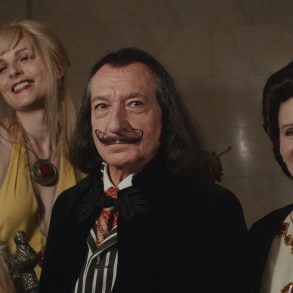Director: Claire Denis
Writers: Jean-Pol Fargeau, Claire Denis
Starring: Grégoire Colin, Alice Houri, Jacques Nolot
Runtime: 108 minutes
Rating: 14A
The opening sequence of Nenette and Boni is merely a prelude to a film that is visually compelling and a symbol of Claire Denis’s skill. The film introduces characters and situations that spark sporadic and erratic events which may seem somewhat inadequate, but make for a terribly entertaining and insightful piece of filmmaking.
The story of Nenette and Boni is that of two siblings who grew apart. Boni (Grégoire Colin ) leads a life of mediocrity, trying desperately to convince himself that he is living in the way in which he wants. He operates a pizza truck when he feels like it, while furiously fantasizing about the cashier in the bakery he often visits. When Nenette (Alice Houri) seeks Boni for help and shelter, he has to push aside the life that he knows and make way for his distant and troubled sibling. This change sparks conflict between the two, bringing back some of the ghosts of their childhood and creating new conflicts. The film employs a fragmented form of storytelling that does not discriminate on the stories it tells, and the accounts go way past Nenette and Boni alone.

Gregoire Colin’s performance as Boni is nothing short of outstanding. He creates a character that exudes desperation and is horribly disturbed. Boni has the film’s most compelling yet hard to digest scenes. His obsessive account of a problematic sexual fantasy and his constantly contained sexual desires create a level of discomfort that is easy to feel when watching the film. Although the character is repulsive in several instances, it is not plain, but multi faceted. Boni seems kind hearted at times, yet horrible and aloof in others, which keeps the spectator guessing and questioning their own emotions. Alice Houri is less remarkable as Nenette, but this shortcoming is hardly her fault. The character unfortunately is not as compelling as Boni, and her scenes are less interesting. She does, however, create a nice contrast to Boni’s furious demeanor, and even though Nenette seems to be in more trouble than her brother, it is she who keeps calm and shows grit. They both make for interesting characters, but there is something terribly alluring not only in Boni, but in Colin’s demeanor that makes his character more attractive. Denis’s actor choices are always interesting to note, since they always have very visually compelling attributes. Colin and Houri are both stunning and magnetic, and they become two of the film’s key visual elements.

The score for Nenette and Boni has a very whimsical element to it; there is a sort of playfulness that prevents the spectator from viewing the film in an entirely dramatic way. It serves as a reminder that some of the nuances in the film are strangely funny, and that the characters should not be taken completely seriously. This lightness offers a nice contrast from the otherwise harsh sequences with which the film is so filled. The cinematography, too, ties in with this contrast. The shots of hyper-masculine Boni with a small white bunny are absolutely delightful, and the very fact that someone like Boni feeds and cares for a small animal makes for a great visual experience. Nenette’s flowing hair in the opening sequence contrasts with her harsh demeanor and eyebrows. The whole of the film is filled with dualities such as these which make for a dynamic image that is very interesting to look at.
The play between serious and comedic in Nenette and Boni is very worthy of mention. Although Boni’s fantasies are disturbing, they are so aggressive that they border on the amusing. Boni shooting cats from his window, and then trying to shoot his own father, also becomes somewhat funny. His tantrums when he finds his sister in his bed and the culminating scene of him stealing a baby from the hospital are all so strangely unlikely that they leave the spectator wondering whether or not the film is meant to be taken seriously. It is quite an interesting feeling that creates a good dynamic between film and spectator.
Photo Credits: TIFF







